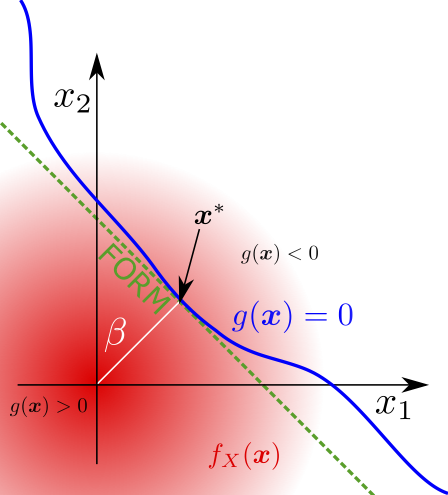Uncertainty Modelling for Engineers¶
How to use this book
This book is intended to serve as a practical introduction to uncertainty quantification for engineers. It is intended to be particularly useful for those beginning a graduate course of study. Basic concepts are explained in detail, and relevant literature is summarised for more advanced concepts. After reading the book and studying the worked examples you should be able to implement a basic uncertainty quantification workflow.
The text of the book is largely adapted from [131].
I have included interactive code examples in python. Where possible the code examples use primitive python datatypes and commonly used packages for clarity.
A pdf of the book can be downloaded from here.
How to make a contribution
This book is an open source project; all readers are heartily invited to contribute with corrections and improvements.
To make a contribution you should first familiarise yourself with JupyterBook. If you are making a major change you may first wish to discuss the change by opening a GitHub issue.
You should fork the repository and make your desired changes to the files locally.
Once this is done you can preview your changes locally by running jupyter-book build uncertainty-book/ in the project directory.
Do not commit the output files from the build process.
You may have to install the project requirements, if you have not already done so.
Once you are happy with your changes you should commit and push your changes, then make a pull request which we can review.
How to cite
You can reference this book through the project’s Zenodo archive using DOI: 10.5281/zenodo.4483793.
The citation will look something like:
Jonathan Sadeghi. (2021, January 31). Uncertainty Modelling for Engineers: Version 0.1.1 (Version v0.1.1). Zenodo. http://doi.org/10.5281/zenodo.4484026
